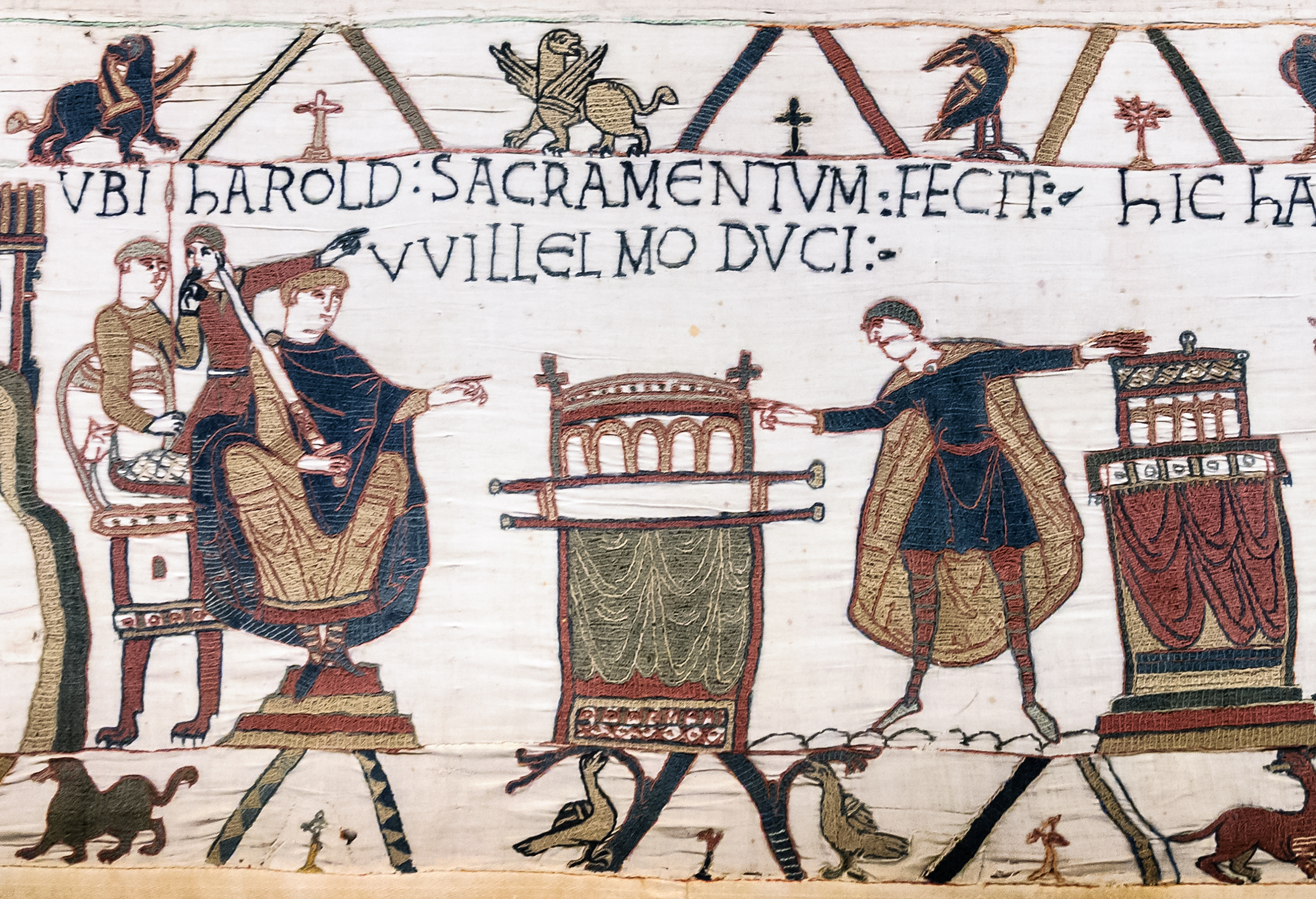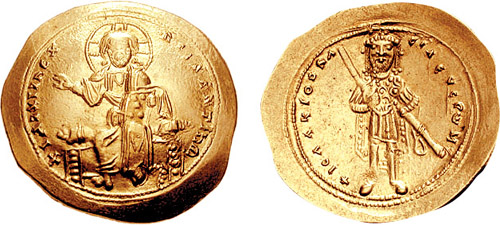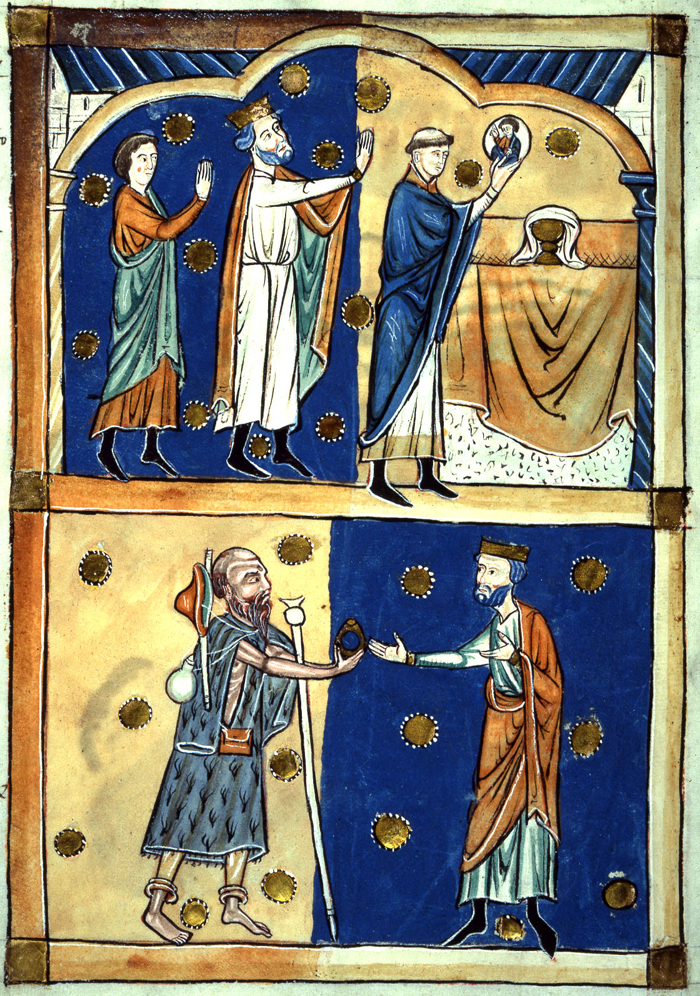|
Ralph The Timid
Ralph the Timid, also known as Ralf of Mantes (died 1057), was Earl of Hereford between 1051 and 1055 or 1057. His mother was Godgifu, the daughter of King Æthelred the Unready and his second wife Emma. His father was Drogo of Mantes, Count of Valois and the Vexin, who died on pilgrimage to Jerusalem in 1035. Ralph came to England with his uncle, the future King Edward the Confessor Edward the Confessor ( 1003 – 5 January 1066) was King of England from 1042 until his death in 1066. He was the last reigning monarch of the House of Wessex. Edward was the son of Æthelred the Unready and Emma of Normandy. He succeede ..., in 1041. He attested three charters as earl in 1050, and his earldom was probably located in the East Midlands, where the lands of his wife Gytha were located. He was a benefactor of Peterborough Abbey. When King Edward quarrelled with Earl Godwin in 1051, Ralph raised the levies of his earldom to support the king. Godwin and his sons were ... [...More Info...] [...Related Items...] OR: [Wikipedia] [Google] [Baidu] |
Peterborough Cathedral
Peterborough Cathedral, properly the Cathedral Church of St Peter, St Paul and St Andrew, and formerly known as Peterborough Abbey or St Peter's Abbey, is a cathedral in Peterborough, Cambridgeshire, in the United Kingdom. The seat of the Church of England, Anglican Bishop of Peterborough, it is dedicated to the Apostles in the New Testament, Apostles Saint Peter, Saint Paul, and Saint Andrew, whose statues look down from the three high gables of the West Front. Founded in the History of Anglo-Saxon England, Anglo-Saxon period as a Minster (church)#History, minster it became one of England's most important Benedictine abbeys, becoming a cathedral only in 1542. Its architecture is mainly Norman architecture, Norman, following a rebuilding in the 12th century. Alongside the cathedrals of Durham Cathedral, Durham and Ely Cathedral, Ely, it is one of the most important 12th-century buildings in England to have remained largely intact, despite extensions and restoration, and is one of ... [...More Info...] [...Related Items...] OR: [Wikipedia] [Google] [Baidu] |
Harold Godwinson
Harold Godwinson ( – 14 October 1066), also called Harold II, was the last crowned Anglo-Saxon King of England. Harold reigned from 6 January 1066 until his death at the Battle of Hastings on 14 October 1066, the decisive battle of the Norman Conquest. He was succeeded by William the Conqueror, the victor at Hastings. Harold Godwinson was a member of the most powerful noble family in England, his father Godwin having been made Earl of Wessex by Cnut the Great. Harold, who served previously as Earl of East Anglia, was appointed to his father's earldom on Godwin's death. After his brother-in-law, King Edward the Confessor, died without an heir on 5 January 1066, the ''Witenagemot'' convened and chose Harold to succeed him; he was probably the first English monarch to be crowned in Westminster Abbey. In late September, he defeated an invasion by rival claimant Harald Hardrada of Norway in the Battle of Stamford Bridge near York before marching his army back south to meet Willi ... [...More Info...] [...Related Items...] OR: [Wikipedia] [Google] [Baidu] |
1057 Deaths
Year 1057 ( MLVII) was a common year starting on Wednesday of the Julian calendar. Events By place Byzantine Empire * June 8 – General Isaac Komnenos proclaims himself emperor in Paphlagonia (modern Turkey), and starts a civil war against Emperor Michael VI. He advances with a Byzantine expeditionary force towards Constantinople. At the same time, Michael sends an army against the rebels – western regiments and eastern ones (those from the Anatolic Theme and Charsianon) – to stop him. * August 20 – Battle of Hades: Rebel forces under Isaac Komnenos defeat the Byzantines on the plains of Hades (near Nicaea). General Katakalon Kekaumenos routs the imperial right flank, and reaches the enemy's camp. He destroys the tents and supplies, which leaves the way open to Constantinople. * September 1 – A riot in favor of Isaac Komnenos breaks out in Constantinople. Patriarch Michael I convinces Michael VI to abdicate the throne, and Isaac is crowned as emp ... [...More Info...] [...Related Items...] OR: [Wikipedia] [Google] [Baidu] |
11th-century Births
The 11th century is the period from 1001 (represented by the Roman numerals MI) through 1100 (MC) in accordance with the Julian calendar, and the 1st century of the 2nd millennium. In the history of Europe, this period is considered the early part of the High Middle Ages. There was, after a brief ascendancy, a sudden decline of Byzantine power and a rise of Norman domination over much of Europe, along with the prominent role in Europe of notably influential popes. Christendom experienced a formal schism in this century which had been developing over previous centuries between the Latin West and Byzantine East, causing a split in its two largest denominations to this day: Roman Catholicism and Eastern Orthodoxy. In Song dynasty China and the classical Islamic world, this century marked the high point for both classical Chinese civilization, science and technology, and classical Islamic science, philosophy, technology and literature. Rival political factions at the Song dynast ... [...More Info...] [...Related Items...] OR: [Wikipedia] [Google] [Baidu] |
Earl Of Herefordshire
Earl of Hereford is a title in the ancient feudal nobility of England, encompassing the region of Herefordshire, England. It was created six times. The title is an ancient one. In 1042, Godwin, Earl of Wessex severed the territory of Herefordshire and its Welsh dependencies from the Kingdom of Mercia. He immediately granted it to his eldest son Sweyn Godwinson. The earldom included the counties of Gloucestershire, Herefordshire, Oxfordshire, Berkshire and Somerset. In 1047, Sweyn attempted to take Eadgifu, Abbess of Leominster, from her nunnery by force with the intention of marrying her. However, the Archbishop of Canterbury and King Edward the Confessor intervened and stopped him. As punishment, King Edward banished Sweyn from England. In 1049, Sweyn returned to England seeking forgiveness, supported by his cousin Beorn Estrithson. However, a disagreement arose and Sweyn murdered his cousin, resulting in his exile once more. He was deemed "a man of no honour". In 1050, Sweyn wa ... [...More Info...] [...Related Items...] OR: [Wikipedia] [Google] [Baidu] |
Domesday Book
Domesday Book ( ; the Middle English spelling of "Doomsday Book") is a manuscript record of the Great Survey of much of England and parts of Wales completed in 1086 at the behest of William the Conqueror. The manuscript was originally known by the Latin name , meaning "Book of Winchester, Hampshire, Winchester", where it was originally kept in the royal treasury. The ''Anglo-Saxon Chronicle'' states that in 1085 the king sent his agents to survey every shire in England, to list his holdings and dues owed to him. Written in Medieval Latin, it was Scribal abbreviation, highly abbreviated and included some vernacular native terms without Latin equivalents. The survey's main purpose was to record the annual value of every piece of landed property to its lord, and the resources in land, labour force, and livestock from which the value derived. The name "Domesday Book" came into use in the 12th century. Richard FitzNeal wrote in the ( 1179) that the book was so called because its de ... [...More Info...] [...Related Items...] OR: [Wikipedia] [Google] [Baidu] |
Toddington, Gloucestershire
Toddington is a village and civil parish in north Gloucestershire in Tewkesbury Borough, located approximately north-east of Cheltenham with a population of 419 at the 2011 census. The village is split into two, the "Old Town" near the church and the "New Town" at the crossing of the B4077 and B4632 roads. The village pub, ''The Pheasant'', is situated at the heart of the village, next to the village shop. Parish church Despite the size of the village, it has a large church, St Andrew's which contains the marble tombs of local nobility, the Tracy family, who variously lived at Sudeley Castle, Hailes Abbey and Toddington Manor. Toddington Manor Toddington Manor lies between New Town and Old Town and was bought by the Turner Prize-winning artist Damien Hirst in 2005 with plans to turn the manor into a museum of his work. 3 The Square, Toddington, is a residential conversion of the old stable block of the Manor House. It dates back to c. 1800 and was possibly built by C. ... [...More Info...] [...Related Items...] OR: [Wikipedia] [Google] [Baidu] |
Ewyas Harold
Ewyas Harold () is a village and civil parish in the Golden Valley, Herefordshire, Golden Valley in Herefordshire, England, near the Wales-England border about halfway between Abergavenny, Monmouthshire, and Hereford. The population of this civil parish at the United Kingdom Census 2011, 2011 census was 883. It lies on the Dulas, Herefordshire, Dulas Stream, brook, and is contiguous with the neighbouring village of Pontrilas. The village is on the site of Ewyas Harold Castle, of which only the motte remains. Its name derives from the Ewyas, Welsh kingdom of Ewyas and from Harold, son of Ralph the Timid (Earl of Hereford), and grandson of King Æthelred the Unready. Ewyas Harold parish has a large area of common land rich in wildlife and ancient meadow saffron, a leftover from cultivation by the monks at Dore Abbey. Some villagers have commoner's rights. The village has a school, a fire station and a redundant church, redundant Roman Catholic, Catholic church. The Church of E ... [...More Info...] [...Related Items...] OR: [Wikipedia] [Google] [Baidu] |
Edith Of Wessex
Edith of Wessex (; 1025 – 18 December 1075) was Queen of England through her marriage to Edward the Confessor from 1045 until Edward's death in 1066. Unlike most English queens in the 10th and 11th centuries, she was crowned. The principal source on her life is a work she herself commissioned, the '' Vita Ædwardi Regis'' or the ''Life of King Edward who rests at Westminster'', which is inevitably biased. Early life Edith was the daughter of Godwin, the most powerful earl in England. Her mother Gytha was sister of Ulf, a Danish earl who was Cnut the Great's brother-in-law. She was probably born in or before 1027. Edith was originally named Gytha, but renamed Ealdgyth (or Edith) when she married King Edward the Confessor.Harold Godwinson Her brothers were Sweyn (c. 1020 – 1052), Harold (later King Harold II) (c. 1022 – 1066), Tostig (c. 1026 – 1066), Gyrth (c. 1030 – 1066), Leofwine (c. 1035 – 1066), and Wulfnoth (c. 1040 – 1094). Edith was the firstborn o ... [...More Info...] [...Related Items...] OR: [Wikipedia] [Google] [Baidu] |
Anglo-Saxon Chronicle
The ''Anglo-Saxon Chronicle'' is a collection of annals in Old English, chronicling the history of the Anglo-Saxons. The original manuscript of the ''Chronicle'' was created late in the ninth century, probably in Wessex, during the reign of King Alfred the Great (r. 871–899). Its content, which incorporated sources now otherwise lost dating from as early as the seventh century, is known as the "Common Stock" of the ''Chronicle''.Hunter Blair, ''Roman Britain'', p. 11. Multiple copies were made of that one original and then distributed to monasteries across England, where they were updated, partly independently. These manuscripts collectively are known as the ''Anglo-Saxon Chronicle''. Almost all of the material in the ''Chronicle'' is in the form of annals, by year; the earliest is dated at 60 BC (the annals' date for Julius Caesar's invasions of Britain). In one case, the ''Chronicle'' was still being actively updated in 1154. Nine manuscripts of the ''Chronicle'', none of ... [...More Info...] [...Related Items...] OR: [Wikipedia] [Google] [Baidu] |
Leofric, Earl Of Mercia
Leofric (died 31 August or 30 September 1057) was an Earl of Mercia. He founded monasteries at Coventry and Much Wenlock and was a very powerful earl under King Cnut and his successors. Leofric was the husband of Lady Godiva. Life Leofric was the son of Leofwine, Ealdorman of the Hwicce, who witnessed a charter in 997 for King Æthelred II. Leofric had three brothers: Northman, Edwin and Godwine. It is likely that Northman is the same as ''Northman Miles'' ("Northman the knight") to whom King Æthelred II granted the village of Twywell in Northamptonshire in 1013. Northman, according to the Chronicle of Crowland Abbey, the reliability of which is often doubted by historians, says he was a retainer (knight) of Eadric Streona, the Earl of Mercia.Baxter, ''Earls of Mercia'', pp. 29–30, and n. 45 for reference It adds that Northman was killed on Cnut's orders along with Eadric and others. Cnut then ''"made Leofric ealdorman in place of his brother Northman, and afterwar ... [...More Info...] [...Related Items...] OR: [Wikipedia] [Google] [Baidu] |
Geoffrey Gaimar
Geoffrey Gaimar (fl. 1130s), also written Geffrei or Geoffroy, was an Anglo-Norman chronicler. His contribution to medieval literature and history was as a translator from Old English to Anglo-Norman. His ''L'Estoire des Engleis'', or ''History of the English People'', written about 1136–1140, was a chronicle in eight-syllable rhyming couplets, running to 6,526 lines. Overview of his work The ''L'Estoire des Engleis'' opens with a brief mention of King Arthur, whose actions affect the plot of the interpolated tale of Havelok the Dane. That aside, most of the first 3,500 lines are translations out of a variant text of the ''Anglo-Saxon Chronicle'' and subsequent portions from other (Latin and French) sources that remain unidentified. Gaimar claims to have also written a version of the '' Brut'' story, a translation of Geoffrey of Monmouth's chronicle ''Historia Regum Britanniae'' (c. 1136) into Anglo-Norman verse, which was commissioned by Constance, wife of Ralph FitzGilb ... [...More Info...] [...Related Items...] OR: [Wikipedia] [Google] [Baidu] |






